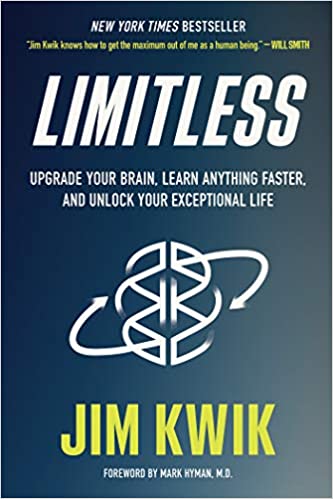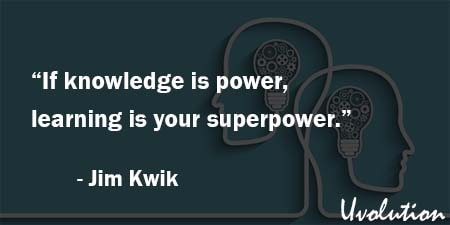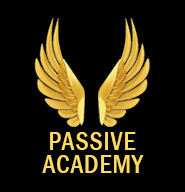Limitless Book by Jim Kwik
The Book in 1 Sentences
Limitless: Upgrade Your Brain, Learn Anything Faster, and Unlock Your Exceptional Life
“We do not need magic to transform our world. We carry all of the power we need inside ourselves already.” ~ Jim Kwik
This book is a “must-read” book. It’ll give you a blueprint to unleash the power within you… Check out these big ideas and be sure to get your copy…
5 BIG Ideas
1. The Limitless Model = 3Ms: Mindset + Motivation + Methods.
2. The 4 “digital” supervillains the 4 D’s: Digital deluge. Digital distraction. Digital dementia. Digital deduction.
3. Learn FASTER = Forget, Act, State, Teach, Enter, Review.
4. All behavior is driven by belief, so before we address how to learn, we must first address the underlying beliefs we hold about what is possible.
5. Motivation = Purpose + Energy + S3 (small simple steps).
Limitless Book Summary
1. The Limitless Model: 3M
“You can learn to be, do, have and share with no constraints. I wrote this book to prove this to you. If you are not learning or living at your true potential, if there is a gap between your current reality and your desired reality, here’s the reason:
There is a limit that must be released and replaced in one of three areas:
• A limit in your Mindset—you entertain a low belief in yourself, your capabilities, what you deserve, or what is possible.
• A limit in your Motivation—you lack the drive, purpose, or energy to take action.
• A limit in your Methods—you were taught and are acting on a process that is not effective to create the results you desire.
This applies to an individual, a family, an organization. We all have our own unique story of struggles and strengths.
Whatever your situation happens to be, here’s the best part: You’re not alone. I’m going to help you become limitless in your own way, within the three-part framework you’re about to learn: Limitless Mindset, Limitless Motivation, and Limitless Methods.”
So, The Limitless Model = 3Ms: Mindset + Motivation + Methods.
Jim explains the 3Ms: “Let me break it down:
• Mindset (the WHAT): deeply held beliefs, attitudes, and assumptions we create about who we are, how the world works, what we are capable of and deserve, and what is possible.
• Motivation (the WHY): the purpose one has for taking action. The energy required for someone to behave in a particular way.
• Method (the HOW): a specific process for accomplishing something, especially in an orderly, logical, or systematic way of instruction.”
Alright, now we understand the Limitless Model… Let’s dive deeper in another big idea… The challenges you may encounter!
2. Superhero and Supervillain
“I’m a firm believer that we all have incredible superpowers that are waiting to be awakened.
I’m not talking about the ability to fly, create iron-clad armor, or shoot lasers from your eyes, but real-life practical abilities like flying through books, iron-clad memory, laser focus, boundless creativity, clear thinking, mindfulness, superior mental attitude, and more.
We are all superheroes in one way or another. Just as every superhero has powers, so do they have arch nemeses. Enter the supervillain.
Think the Joker to Batman, Lex Luthor to Superman. The villains we face may not look the same as they do in the movies, but they’re still the bad guys—the ones you, as a superhero, need to vanquish and hold at bay.
Modern-day supervillains get in our way and make life harder, keeping us from our potential. They hold us back and rob us of our productivity, prosperity, positivity, and peace of mind. And it’s up to us to recognize and defeat them.”
Superheroes always have supervillains… So, when you try to be the best you can be, you’ll always face… guess what?! Supervillains…
Jim tells us about the curse of technology: “To be clear, technology is a vital part of progress and being limitless.
It allows us to do everything from connecting to learning, making our lives that much more convenient.
But it is possible that we are consuming digital technology at a rate that even its creators would find extreme. Much of the technology available to us today is so new that we don’t know the level at which we need to control our interaction with it. ...
Our community has expressed a growing concern about their overreliance on technology and they come to us to upgrade their brains to find relief from these ‘four horsemen’ of our age: digital deluge, digital distraction, digital dementia, and digital deduction.
It’s important to note that overload, distraction, forgetfulness, and default thinking have been around for ages. While technology doesn’t cause these conditions, it has great potential to amplify them.”
So, these are the 4 “digital” supervillains the 4 D’s:
Digital deluge. Digital distraction. Digital dementia. Digital deduction.
You probably know that we’re deluged with an overload of information. Jim says: “Compared to the 15th century, we now consume as much data in a single day as an average person from the 1400s would have absorbed in an entire lifetime.”
And we’re distracted by all these digital notifications! Jim says: “Instead of relaxing into the downtime that we might experience when waiting in line, waiting for a bus or an appointment, etc., we pull out our phones and train our distraction muscles.”
And of course, we’re experiencing dementia as we depend more and more on technology. Jim says: “There’s research that says our brains are more like a muscle, rather than a hard drive that fills up.
That the more you use it, the stronger it gets, and the more it can store. The question is: Are we making those choices consciously, or are we acting out of unconscious habit?”
Also, we’re losing our power of deduction. Jim says: “The upshot is that deduction—an amalgam of critical thinking, problem solving, and creativity that is an essential skill for being limitless—is becoming automated.”
Jim also tells us about the fifth D: Digital Depression which he says is “a result of the comparison culture that emerges when we let the highlight reels of the social media feeds of others cause us to perceive ourselves as less than.”
So, start identifying your supervillains, and work on eliminating them!
3. Learn FASTER
“To get the most out of this book, here is a simple method for learning anything quickly. I call it the FASTER Method, and I want you to use this as you read, starting now.
The acronym FASTER stands for Forget, Act, State, Teach, Enter, Review. Here’s the breakdown:
F is for Forget - The key to laser focus is to remove or forget that which distracts you. ...
A is for Act - Traditional education has trained many people that learning is a passive experience. You sit quietly in a class, you don’t talk to your neighbor, and you consume the information. But learning is not a spectator sport. The human brain does not learn as much by consumption as it does creation. ...
S is for State - All learning is state dependent. Your state is a current snapshot of your emotions. It is highly influenced by your thoughts (psychology) and the physical condition of your body (physiology). ...
T is for Teach - If you want to cut your learning curve dramatically, learn with the intention of teaching the information to someone else. Think about it: If you know you have to give a presentation on what you learn, you will approach how you learn the topic with the intention of mastering it well enough to explain it to someone else. ...
E is for Enter - What is the simplest and most powerful personal performance tool? Your calendar. We enter important things on our schedule. ... Do you know what a lot of people don’t schedule? Their personal growth and development. If it’s not on your calendar, there’s a good chance it’s not getting done. ...
R is for Review - One of the best ways to reduce the effects of the forgetting curve is to actively recall what you learned with spaced repetition.”
4. Mindset
“All behavior is driven by belief, so before we address how to learn, we must first address the underlying beliefs we hold about what is possible.
We’re not born with pre-installed mindsets about what we’re capable of achieving—we learn these fixed and limited ways of thinking from the people in our lives and the culture we experience growing up.
Think of a young elephant tied to a stake in the ground. When it’s a baby, the elephant isn’t strong enough to pull the stake up so it eventually stops trying because it learns the effort is futile.
As that elephant grows, it gains more than enough power and strength to pull out the stake, but it remains tied up by something as inconsequential as a rope and a flimsy piece of metal because of what it learned as a baby. In psychology, it’s called learned helplessness.
Most us behave like that elephant. At some point, we had an experience that gave us an impression of what we’re capable of, and our belief about our potential has been set ever since.
But just as helplessness is learned, it’s just as possible to learn to be limitless. In this section, you’re going to learn about the seven lies we’ve been taught about our potential and how to replace them with new beliefs.”
5. LIES and BS
“I use the term LIE intentionally. In this case, LIE is an acronym for Limited Idea Entertained. If you are like the vast majority of people out there, you are entertaining ideas about yourself that define you as something less than what you truly have the potential to achieve.
You’re giving these ideas energy and allowing them to take residence in your mind, but they’re really nothing but BS (in this case, an abbreviation for Belief Systems). ... you will discover ... how they imprison you, and what you can do about it.
And keep asking yourself this question: How many of my perceived constraints are nothing more than LIEs and BS? I think you’re going to be stunned with the answers, and that these answers are going to be liberating.”
6. Motivation
“When you combine purpose, energy, and small simple steps S3, you get sustainable motivation. And the ultimate form of motivation is the state of flow. Think about it as energy management. Creating it, investing it, and not wasting it.
A clear purpose or reason gives you energy. Practices you employ will cultivate energy for your brain and the rest of your body, and small simple steps require little energy. ...
Purpose drives us to act, and our purpose must be clear enough that we know why we’re acting and what we’re hoping to gain.
Generating sufficient energy is vital—if you’re tired or sleepy, or if your brain is foggy, then you won’t have the fuel to take action. Small simple steps take minimal effort and keep you from being paralyzed with overwhelm.
And, finally, finding flow is the ultimate boon to motivation.”
Always remember: Motivation = Purpose + Energy + S3.
That was my QUICK Limitless Book Summary. If you’re interested, get your copy. There is a HUGE amount of wisdom and life-changing ideas in this book, and we’ve only touched on a tiny bit of it.
Buy The Book: Limitless by Jim Kwik

GET Blinkist 7 Days FREE Trial
3000+ Book Summaries
(Audio and Text)







